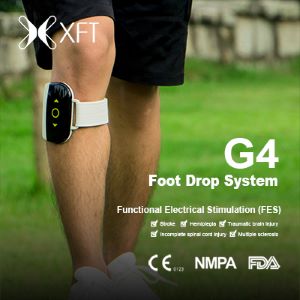Burn
Lower Extremity Orthosis fabrication for the Plastics Patient: Management of Wounds, Burns, and Soft Tissue Defects
Wednesday, November 1, 2023
2:25 PM - 2:31 PM
Location: Station 9
- KP
Kelly Parker, OTR, CHT, CLT
Occupational Therapist / Certified Hand Therapist / CLT
Arms In Motion Rehab, LLC, Florida, United States
Presenting Author(s)
Research Objectives: The purpose of this article is to introduce methods for therapist intervention for lower extremity orthosis fabrication to provide protection and support following soft tissue injuries which underwent complex surgical repair.
Design: Consultation for patients who had soft tissue defects, various types of flaps, and were at high risk for contractures, skin breakdown, and slow healing wounds to the lower extremity. Patients were seen day one following orthosis fabrication for skin checks. Orthosis could be modified as needed to achieve desired ankle ROM throughout hospitalization.
Setting: Inpatient acute hospital and outpatient burn/wound clinic
Participants: Patients with soft tissue defects to lower extremity
Interventions: Synergy thermoplastic was utilized for custom orthosis fabrication. Each orthosis was custom fabricated to patient’s needs. Patients and nursing staff were educated in donning and doffing of orthosis as well as appropriate skin check procedures. Primary therapist who fabricated the orthosis was available to perform orthosis checks and close monitoring for procedures which have high-risk for devascularization. Close contact was maintained between therapist, mid-levels, and surgeon in order to ensure orthosis modifications were timely following wound dressing changes, wound vac changes, and other surgical procedures/debridement.
The thermoplastic material was applied various ways including posterior, anterior, lateral, and clamshell for circumferential support. Material could be built out over fragile structures or completely avoided.
The thermoplastic material could be modified to provide static progressive tissue elongation if indicated.
Main Outcome Measures: The main outcome measures used were range of motion and wound status/progression/length of healing
Results: Custom orthoses offered protection as well as support to allow for decreased risk of pressure and devascularization to flaps. Custom orthoses improved ankle and foot positioning which contributed to improved functional mobility when patients were cleared for weightbearing. Orthoses were also noted to better support structures while patients were ambulating with walker or knee scooter.
Conclusions: Custom orthosis fabrication for the lower extremity, when done correctly, can be an effective intervention for soft tissue protection, contracture and deformity management, and to aid overall recovery process to maximize independence with ADL/IADL and functional mobility.
Author(s) Disclosures: No conflicts
Design: Consultation for patients who had soft tissue defects, various types of flaps, and were at high risk for contractures, skin breakdown, and slow healing wounds to the lower extremity. Patients were seen day one following orthosis fabrication for skin checks. Orthosis could be modified as needed to achieve desired ankle ROM throughout hospitalization.
Setting: Inpatient acute hospital and outpatient burn/wound clinic
Participants: Patients with soft tissue defects to lower extremity
Interventions: Synergy thermoplastic was utilized for custom orthosis fabrication. Each orthosis was custom fabricated to patient’s needs. Patients and nursing staff were educated in donning and doffing of orthosis as well as appropriate skin check procedures. Primary therapist who fabricated the orthosis was available to perform orthosis checks and close monitoring for procedures which have high-risk for devascularization. Close contact was maintained between therapist, mid-levels, and surgeon in order to ensure orthosis modifications were timely following wound dressing changes, wound vac changes, and other surgical procedures/debridement.
The thermoplastic material was applied various ways including posterior, anterior, lateral, and clamshell for circumferential support. Material could be built out over fragile structures or completely avoided.
The thermoplastic material could be modified to provide static progressive tissue elongation if indicated.
Main Outcome Measures: The main outcome measures used were range of motion and wound status/progression/length of healing
Results: Custom orthoses offered protection as well as support to allow for decreased risk of pressure and devascularization to flaps. Custom orthoses improved ankle and foot positioning which contributed to improved functional mobility when patients were cleared for weightbearing. Orthoses were also noted to better support structures while patients were ambulating with walker or knee scooter.
Conclusions: Custom orthosis fabrication for the lower extremity, when done correctly, can be an effective intervention for soft tissue protection, contracture and deformity management, and to aid overall recovery process to maximize independence with ADL/IADL and functional mobility.
Author(s) Disclosures: No conflicts
Learning Objectives:
- Upon completion participant with be able to identify appropriate patients who could benefit from custom LE orthosis
- Upon completion participant will be able to identify various techniques for LE orthosis fabrication
- Upon completion participant will be able to identify common materials needed for basic LE orthosis fabrication

.jpg)
